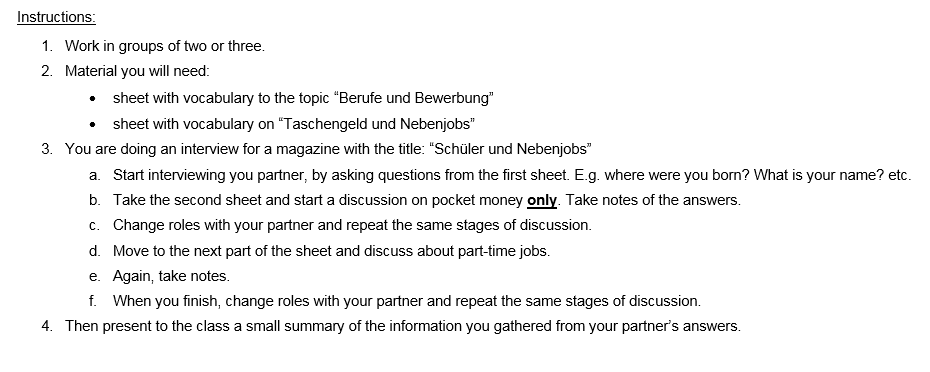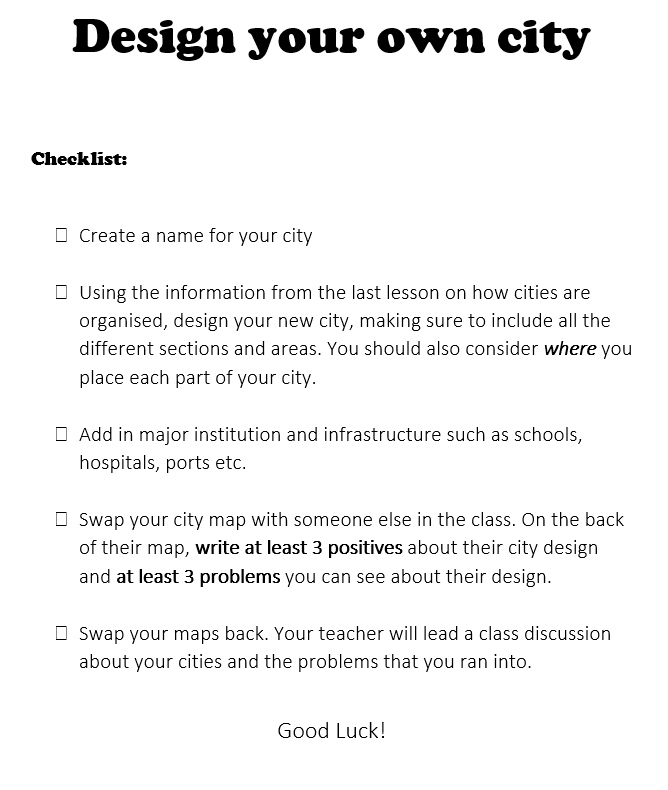Create and maintain supporting and safe learning environments
AITSL Standards 4.2 & 3.5
Focus Areas
- Gives clear directions/instructions
- Encourages wide participation
- Delivers clear instructions
Description
My classroom experience indicated that a uniform approach toward students is ineffective. This is also corroborated by Thousand (2007), who asserts that differentiated instructions can help teachers meet the needs of children with diverse characteristics. In my placement, I achieved this by preparing differentiated activity and task instructions in multiple oral and written formats, so as to accommodate students’ diverse learning needs, create inclusive classroom environments and communicate my learning intentions better (Pictures 4.1, 4.2). In my German class, I had to especially cater for a student with hearing impairments for whom I specifically made my instructions visually accessible by showing them on the board throughout the duration of the class (Picture 4.3). In addition to using differentiated instructions, I tried to further increase understanding and participation by being constantly active, approaching and helping students where needed, and maintaining a friendly and engaging presence. The post-lesson feedback that my Mentor provided on this issue, confirms that I was successful in doing so.
References
Thousand, J.S., Nevin, A. I., & Villa, R. A. (2007). Differentiating Instruction: Collaborative Planning and Teaching for Universally Designed Learning. Publisher Place of publication not identified: SAGE Publications.
Evidence Artefacts

Picture 4.1: Written instructions in the Year 10 German class.

Picture 4.2: Written instructions in the Year 8 Geography class.
